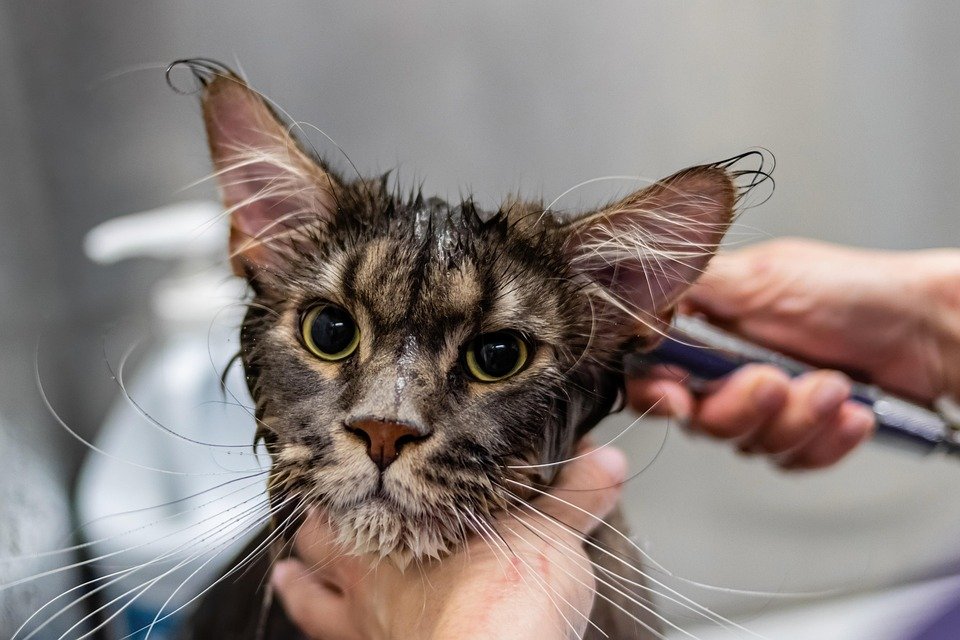
Introduction
Living in a home with multiple cats can be a joyful experience, but it also comes with its unique set of challenges, particularly when it comes to grooming and maintaining hygiene. Each cat has its own personality, preferences, and grooming needs. To ensure the health and happiness of all your feline companions, it is essential to master grooming practices that address the needs of a multi-cat environment. This article aims to provide in-depth insights and practical tips on how to maintain optimal grooming standards in a home with multiple cats.
Understanding Individual Grooming Needs
Before diving into a grooming routine, it’s crucial to understand that each cat may have different grooming needs based on various factors such as breed, age, and health status.
Breed-Specific Requirements
Cats come in a variety of breeds, each with its own grooming needs. For example, long-haired breeds like the Persian require daily brushing to prevent mats and tangles, while short-haired breeds like the Siamese may only need weekly grooming sessions. Researching and understanding the specific grooming requirements of each breed in your household will help you tailor a suitable routine.
Age and Health Considerations
Kittens, adult cats, and senior cats have different grooming needs. Kittens may need more frequent baths due to their playful nature leading to messy situations, while senior cats may require assistance with grooming due to reduced mobility or health issues. Additionally, cats with health problems like arthritis or obesity may need extra help as they might struggle to groom themselves effectively.
Establishing a Grooming Routine
Consistency is key when it comes to grooming multiple cats. Establishing a routine that works for both you and your cats will help in managing their hygiene effectively.
Creating a Relaxing Environment
Cats are sensitive creatures, and a stressful environment can lead to resistance during grooming. Ensure that the grooming area is quiet, comfortable, and free from distractions. Use soft, soothing tones to calm your cats and offer treats as rewards to create a positive association with grooming time.
Scheduling Regular Sessions
Develop a schedule that allows for regular grooming sessions for each cat. This could be daily for long-haired breeds or weekly for short-haired ones. Consistent timing helps cats understand and expect grooming, making them more cooperative over time.
Essential Grooming Tools
Investing in the right grooming tools is essential for maintaining your cats’ coats and overall hygiene.
Brushes and Combs
Different brushes and combs serve various purposes. A slicker brush is excellent for removing loose fur and preventing mats, while a wide-tooth comb is perfect for detangling long hair. Consider the specific coat type of each cat when selecting grooming tools.
Nail Clippers
Nail trimming is an important part of grooming that prevents claws from becoming overgrown and causing injury. Use cat-specific nail clippers and be cautious not to cut too close to the quick, which can cause bleeding and pain.
Shampoo and Conditioner
For cats that require bathing, choose a gentle, cat-specific shampoo and conditioner. Never use human shampoo as it can irritate a cat’s skin. Be mindful of any allergies or skin sensitivities your cats may have when selecting these products.
Addressing Common Grooming Challenges
Grooming multiple cats can present challenges, from dealing with uncooperative cats to managing shedding and hairballs.
Handling Uncooperative Cats
Some cats may resist grooming due to fear, anxiety, or previous negative experiences. In such cases, patience is crucial. Gradually introduce grooming tools and allow the cat to sniff and explore them. Start with short sessions and gradually increase the duration as the cat becomes more comfortable. If necessary, seek the advice of a professional groomer or veterinarian for tips on handling particularly challenging cases.
Managing Shedding and Hairballs
Shedding is a natural process, but it can be more pronounced in multi-cat households. Regular brushing helps control shedding and reduces the likelihood of hairballs. Additionally, feeding your cats a high-quality diet rich in omega fatty acids can promote healthy skin and coat, further reducing excessive shedding.
Hygiene Beyond Grooming
Maintaining a clean environment is just as important as grooming in ensuring the health and well-being of your cats.
Litter Box Management
In a multi-cat home, having enough litter boxes is crucial. The general rule is to have one litter box per cat, plus one extra. Regularly scoop and clean the litter boxes to prevent odor and encourage proper use.
Cleaning and Sanitizing
Regularly clean and sanitize the grooming area, food and water bowls, and sleeping areas to prevent the spread of germs and parasites. Use pet-safe cleaning products to ensure the safety of your cats.
Conclusion
Mastering grooming in a multi-cat home involves understanding the unique needs of each cat, establishing consistent routines, and creating a stress-free environment. By investing in the right tools and addressing common grooming challenges, you can ensure that your cats stay healthy, happy, and well-groomed. Remember, grooming is not just about maintaining appearance; it’s an essential aspect of your cats’ overall health and well-being.
Incorporating these practices will not only enhance the quality of life for your feline companions but also strengthen the bond between you and your cats. With patience, dedication, and the right approach, you can become a master of grooming in your multi-cat home.






